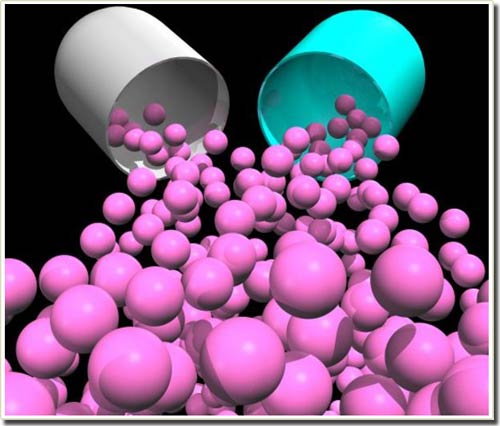Application of nanotechnology in cancer treatment
Researchers are developing nanoparticles specifically designed for more effective use in medicine. Nanoparticles carry a tiny magnet and a set of DNA, which, when acted on by an electromagnetic field, release the drug as desired by the therapist. This unique treatment will help reduce the amount of medication you need and reduce unwanted side effects.
Geofrey von Maltzahn, a graduate student at Harvard's Department of Medical Science and Technology - MIT, says that this technology controls nanoparticles that release drugs quickly only when they get to the right cells that need treatment. .
The team, led by Sangeeta Bhatia, Associate Professor, presented their results in Advanced Materials .
After being introduced into the body, most drugs will leak into the patient's blood even if they do not have access to infected cells, such as a cancerous tumor. This causes side effects on patients and reduces the use of drugs.
Reducing the risk of leakage is the content of many different bio-medical works. In one study, the drug was introduced into a slowly dissolving polymer particle until the drug entered the tumor. Another method is to try to attach a special molecule to the surface of the particle, bringing it to the molecule of the tumor and releasing the drug. However, these measures are not thorough.
According to Warren Chan, a professor of materials science at the University of Toronto, Canada and another expert on nanotechnology applications in bio-medicine, the leak continues. a lot of molecules put into the patient's body and stuck to the target.

Illustrate nanoparticles that release drugs when impacted by electromagnetic radiation.(Photo: iStock photo)
String of beads with tail
New nanoparticles look grainy and have a tail. It has an iron oxide nucleus coated with a polymer but the nucleus does not contain drugs but a DNA tail, DNA fragment is connected to the particle with a hydrogen molecule, and the drug connects to the DNA the same way. These molecules are separated when heated.
Scientists can control the temperature that breaks down the bonds of hydrogen molecules by increasing the number of these molecules.
Bhatia and the team examined the quality of this new technology. Nanoparticles put in blood vessels of the right size to remain in the blood vessels, without leaking out and finding tumors successfully.
Leakage
Blood vessels lead to very high leakage. Once the nanoparticles reach the diseased tissue, they will leak directly into the cancer cell. Iron-oxide molecules appear on MRI resonators and doctors can monitor the process of drug delivery.
When nanoparticles approach the tumor, doctors stimulate them with a series of electromagnetic radiation pulses. This energy heats the iron in the nucleus, breaks down the hydrogen bond and releases the drug into the tumor. Such a particle can load many different drugs and each one is programmed to release drugs at different temperatures.
Unique combination
Warren Chan said, this is the first work to mention the use of electromagnetic molecules on the surface of DNA. This combination is very unique. But he is also concerned that injecting drugs into DNA may alter drug activity and the molecules still have the potential to become infected in the liver.'It is currently the biggest challenge of nanotechnology.'
Recent experiments have shown that researchers have succeeded in abusing DNA binding by radiation, but these experiments were conducted in colloidal liquid environments. Next, scientists must test the ability of molecules to act in the environment of cancer cells.
- Develop nanotechnology to kill cancer cells
- Using nanotechnology and cancer light treatment
- Vietnam successfully built the Nano FGC complex for cancer treatment
- New step of nano cancer treatment
- Canada applies 3D technology to treat lung cancer
- Deploy cell therapy in cancer treatment
- Grade 10 students create nano probes for cancer treatment
- Using nanotechnology to create microchips for cancer detection
- The United States for the first time allowed the application of gene therapy to treat cancer
- Dangerous cancer - cause and prevention
- Promising breakthrough in research on cancer treatment vaccine
- How is cancer treated?
 Green tea cleans teeth better than mouthwash?
Green tea cleans teeth better than mouthwash? Death kiss: This is why you should not let anyone kiss your baby's lips
Death kiss: This is why you should not let anyone kiss your baby's lips What is salmonellosis?
What is salmonellosis? Caution should be exercised when using aloe vera through eating and drinking
Caution should be exercised when using aloe vera through eating and drinking